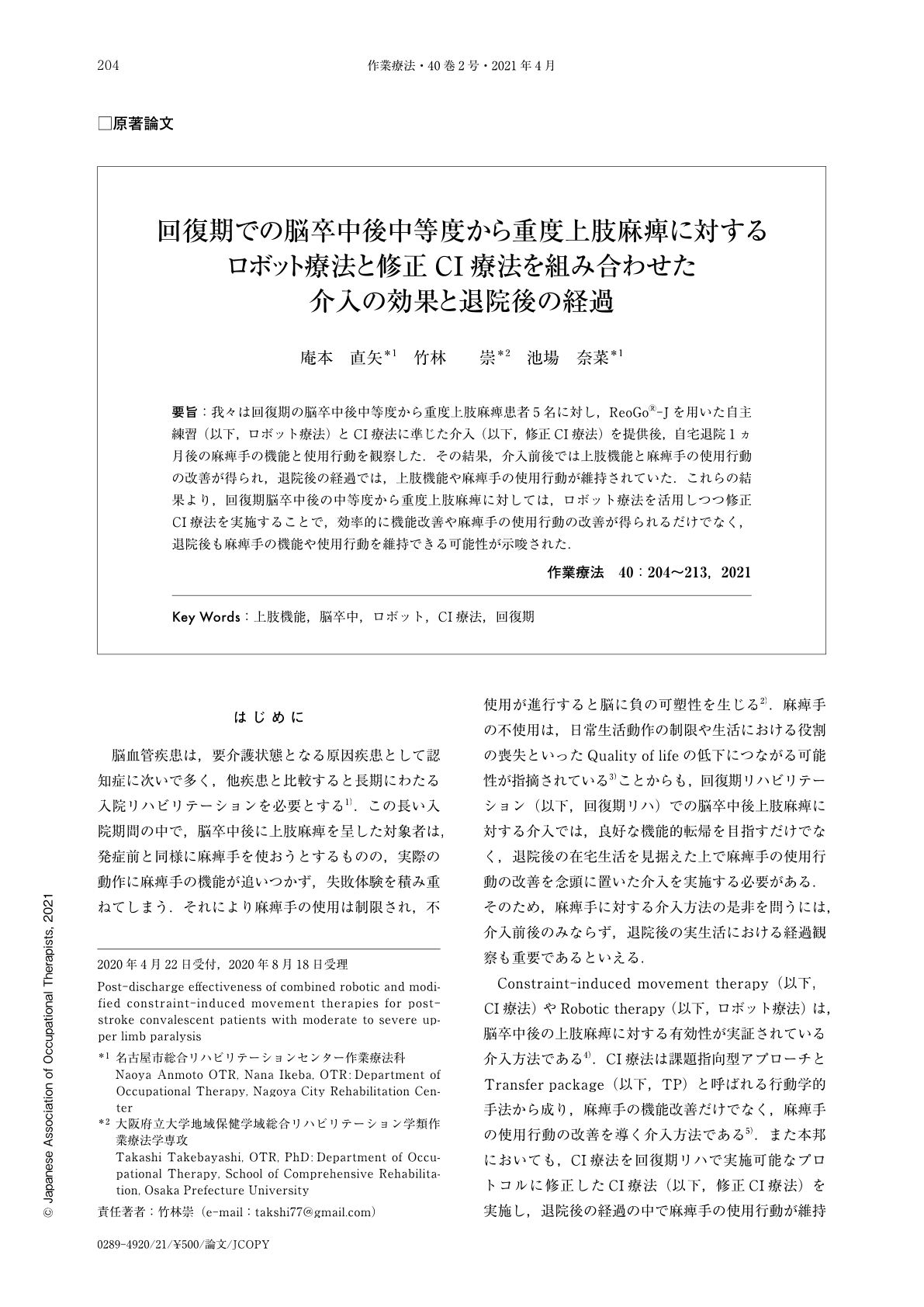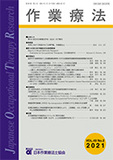Japanese
English
- 販売していません
- Abstract 文献概要
- 1ページ目 Look Inside
- 参考文献 Reference
- サイト内被引用 Cited by
要旨:我々は回復期の脳卒中後中等度から重度上肢麻痺患者5名に対し,ReoGo®-Jを用いた自主練習(以下,ロボット療法)とCI療法に準じた介入(以下,修正CI療法)を提供後,自宅退院1ヵ月後の麻痺手の機能と使用行動を観察した.その結果,介入前後では上肢機能と麻痺手の使用行動の改善が得られ,退院後の経過では,上肢機能や麻痺手の使用行動が維持されていた.これらの結果より,回復期脳卒中後の中等度から重度上肢麻痺に対しては,ロボット療法を活用しつつ修正CI療法を実施することで,効率的に機能改善や麻痺手の使用行動の改善が得られるだけでなく,退院後も麻痺手の機能や使用行動を維持できる可能性が示唆された.
We provided voluntary practice using ReoGo®-J (robot therapy) and intervention similar to CI therapy (modified CI therapy) for 5 patients with moderate to severe upper limb paralysis after stroke in the convalescent phase. In this study, we observed the upper limb function and the usage of the paralyzed hand 1 month after discharge. As a result, the upper limb function and the usage of the paralyzed hand improved after the intervention, and were maintained after discharge. Therefore, providing interventions combining robotic therapy and modified CI therapy to patients with severe to moderate upper limb paralysis in the convalescent period leads to efficient functional improvement of paralyzed hand usage, and may maintain the function and usage the of paralyzed hand after discharge.

Copyright © 2021, Japanese Association of Occupational Therapists. All rights reserved.


